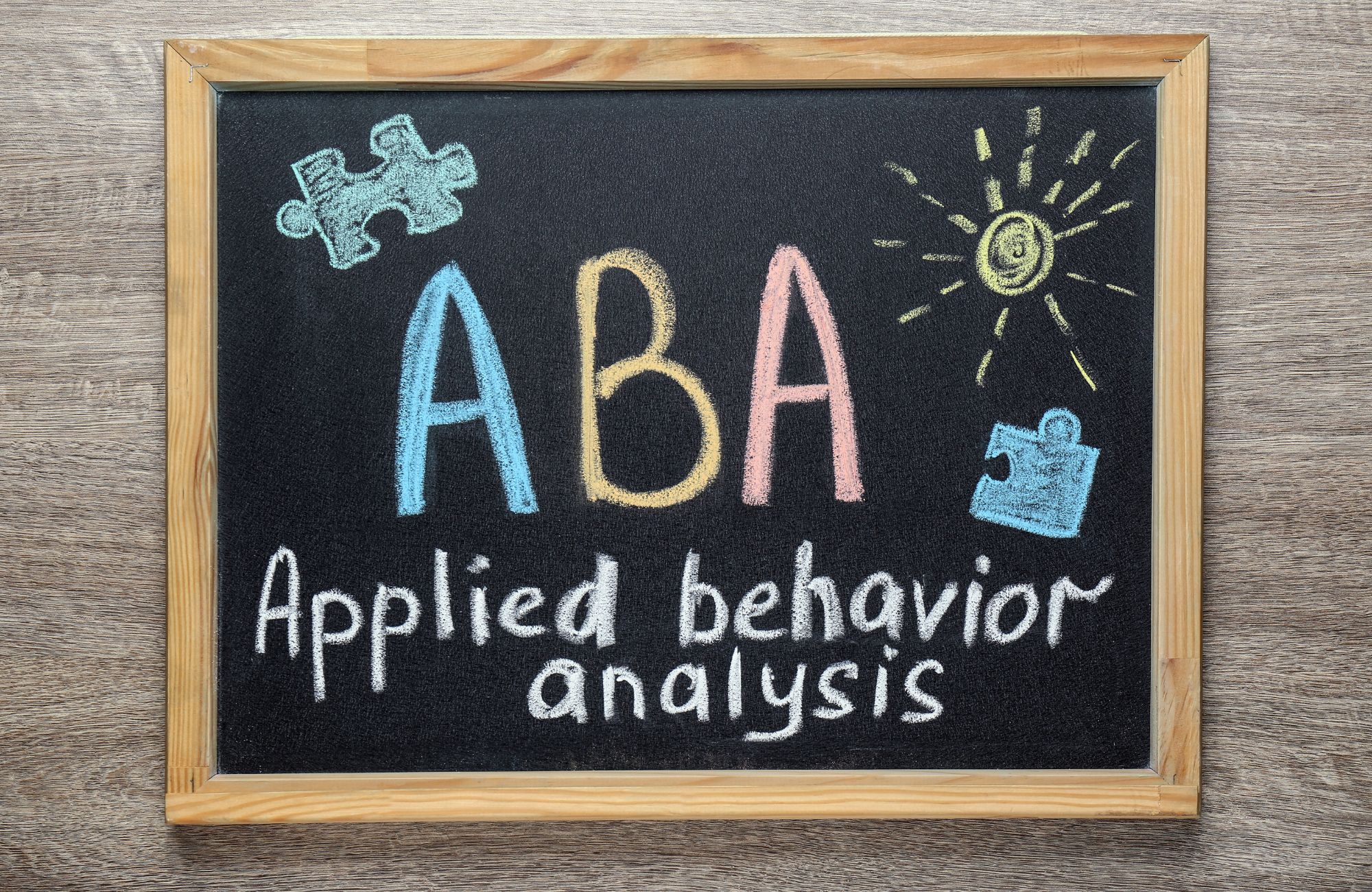Many parents start noticing differences in how their baby interacts or communicates by the time the child turns two. Autistic Characteristics in Infants can often be seen through subtle signs like limited eye contact, delayed responses, or unusual reactions to sounds or touch. Recognizing these traits is not about finding something wrong, it’s about understanding how your baby’s brain may be developing and knowing when to seek support that can truly help.
As a parent, you know your baby best. Simple moments like eye contact, gestures, or how they respond to sounds can offer important clues. This guide will help you understand key milestones and early signs of autism so you can feel confident moving forward.
Understanding Autism in Infants
Autism Spectrum Disorder (ASD) is a neurological and developmental condition that affects how children communicate, interact with others, and respond to their surroundings. In infants, you may begin to see early signs of how autism develops through subtle differences in eye contact, gestures, and responses to sound or touch. These early traits are widely studied in fields like developmental and abnormal child psychology, which help inform how clinicians identify and support children with autism from an early age.
Because autism exists on a spectrum, the signs can look different in every child. Some show subtle changes over time, while others have more noticeable traits early in life. The Centers for Disease Control and Prevention estimates that about 1 in 31 children are diagnosed with autism, and many parents notice early signs as young as 6 months. Understanding autism as a different developmental path helps parents focus on their child’s unique strengths and needs.
The Developing Brain: Typical vs. Atypical Development
The first years of life are a critical time for brain development, as babies build millions of neural connections through interaction with their surroundings. In typical development, children follow patterns such as making eye contact, responding to their name, babbling, and engaging in social play.
For infants with autism, these patterns may look different. Their brains may process information in unique ways, leading to alternative developmental paths rather than delays. For example, they might focus more on patterns than faces or respond to language differently. These early differences reflect a distinct way of experiencing the world, not a deficit.
Month-by-Month Developmental Indicators
0-3 Months
During the first three months, most infants begin to make eye contact, smile at familiar faces, respond to sounds, follow movement, and make cooing sounds. In contrast, early signs of autism may include limited eye contact, reduced response to voices, unusual reactions to sensory input, differences in crying patterns, and fewer facial expressions. These signs are often subtle, but studies show that babies later diagnosed with autism may begin making less eye contact as early as 2 months. This does not mean avoiding it entirely, but showing a gradual decline.
4-7 Months
Between 4 and 7 months, most babies respond to voices, recognize their name, babble, show emotions, play social games, and reach for objects. Signs of autism may include limited babbling, not responding to their name, reduced social interest, minimal reaching or grasping, and unusual reactions to sounds or touch. By 6 months, most babies recognize their name, but autistic infants may not respond consistently.
8-12 Months
Between 8 and 12 months, most babies begin pointing and waving, follow where others point, say simple words, play social games, and explore objects. Signs of autism at this stage may include little or no gesturing, not responding to their name, lack of shared attention, minimal babbling, unusual body movements, or intense focus on objects. By 9 months, most babies follow a caregiver’s gaze or pointing, a key social skill that may be delayed in autism.
12-18 Months
This stage brings rapid growth in language and social skills. Most toddlers begin using a handful of words, understand simple directions, engage in pretend play, and show growing independence. Signs of autism may include limited speech, not following instructions, repetitive behaviors, unusual play, food sensitivities, or regression of skills. Losing abilities like babbling or eye contact after previously showing them is especially important to mention to a pediatrician, as research shows about one-third of autistic children experience regression before preschool.
18-24 Months
By this age, most toddlers use over 50 words, form two-word phrases, follow two-step directions, engage in pretend play, and show interest in peers. Signs of autism may include limited spontaneous speech, repeating phrases, difficulty with pretend play, strong focus on specific topics, and reduced social interest. Since language typically expands between 18 and 24 months, limited speech by age two, especially with low social engagement, may signal the need for evaluation.
Gender Differences in Autism Presentation
Research shows that autism may appear differently in female infants, which can lead to later diagnoses compared to boys. Girls may show stronger social motivation, more typical play, fewer repetitive behaviors, and better attention to faces, even if they process social cues differently.
These subtle differences can make autism harder to recognize in girls. Parents should know that autism might not follow the patterns often seen in boys. Even in infancy, girls later diagnosed with autism may show less obvious signs, such as maintaining eye contact but processing social information in unique ways.
Tracking Your Baby’s Development
Monitoring your baby’s development is essential for all parents, whether or not you have concerns about autism. Consider these strategies:
- Keep a developmental journal: Note when your child reaches key milestones and any behaviors that seem unusual or concerning.
- Take video recordings: Regular videos (monthly) can help document development and provide objective information to share with healthcare providers.
- Use milestone tracking apps: The CDC’s Milestone Tracker app provides age-appropriate milestones and allows you to record your observations.
- Schedule regular pediatric check-ups: The American Academy of Pediatrics recommends developmental screenings at 9, 18, and 30 months, with autism-specific screenings at 18 and 24 months.
- Document specific concerns: Rather than general statements like “not socializing,” note specific observations like “doesn’t look when I point to objects” or “doesn’t respond to his name consistently.”
This documentation can be invaluable if you need to discuss developmental concerns with healthcare providers.
The Diagnostic Process
If you notice potential autism characteristics in your infant, here’s what to expect:
- Initial discussion with pediatrician: Share your specific concerns and observations. Be prepared with examples and your developmental tracking notes.
- Developmental screening: Your pediatrician may use standardized screening tools like the Modified Checklist for Autism in Toddlers (M-CHAT) or the Ages and Stages Questionnaire (ASQ).
- Referral to specialists: If screening indicates concerns, you may be referred to a developmental pediatrician, child psychologist, pediatric neurologist, or a multidisciplinary team.
- Comprehensive evaluation: This typically includes a review of developmental history, direct observation, standardized assessments like the ADOS, evaluations of language and cognitive skills, and a medical exam to rule out other conditions.
- Diagnosis and recommendations: If a diagnosis is made, you’ll receive information about appropriate interventions and supports.
The diagnostic process can take time, but starting early means your child can access appropriate supports sooner. While waiting for evaluation, continue engaging with your child and implementing strategies recommended by professionals.
Early Intervention Approaches
Research consistently shows that early intervention can significantly improve outcomes for autistic children. Early support takes advantage of the incredible neuroplasticity—the brain’s ability to form new connections—during the first few years of life.
Applied Behavior Analysis (ABA)
ABA therapy is a structured, evidence-based approach that focuses on improving specific behaviors such as communication, social skills, and daily routines. Therapists use positive reinforcement to encourage helpful behaviors and reduce those that may interfere with learning or interaction.
Speech and Language Therapy
This therapy supports children with delayed or atypical language development. It helps build skills like understanding and using words, forming sentences, and improving nonverbal communication such as gestures, facial expressions, and tone of voice.
Occupational Therapy
Occupational therapists help children develop the motor and sensory skills needed for everyday tasks like eating, dressing, writing, and playing. It also addresses sensory processing differences that may affect focus, behavior, or comfort in various environments.
Developmental Therapies
Programs like the Early Start Denver Model (ESDM) and Floortime encourage learning through play and emotional connection. These approaches help children build social, emotional, and cognitive skills in a natural, engaging way that supports their individual pace of development.
Parent-Mediated Interventions
These programs empower parents to become active partners in their child’s development. With guidance from trained professionals, parents learn how to create learning opportunities during daily routines, helping their child grow through responsive and meaningful interactions.
Remember that every child is unique, and what works best will depend on your child’s specific strengths and challenges.
Supporting Your Child and Family
Recognizing potential autism characteristics in your infant can be emotionally complex. As you navigate this journey, remember:
- You’re not alone: Many families share similar experiences. Connect with support groups, online communities, or other parents for understanding and practical advice.
- Focus on connection: The parent-child relationship remains the foundation for development. Continue to engage, play, and connect with your child in ways that work for both of you.
- Celebrate strengths: Every child has unique abilities and strengths. Recognize and build on what your child does well.
- Practice self-care: Supporting a child with developmental differences requires energy and resilience. Prioritize your own well-being through rest, support, and stress management.
- Sibling support: If you have other children, provide age-appropriate information and ensure they receive attention and understanding.
- Access resources: Explore financial supports, respite care, and community programs designed for families of autistic children.
Remember that an autism diagnosis doesn’t change who your child is. It provides a framework for understanding their needs and accessing appropriate supports.
Conclusion
Recognizing autistic characteristics in infants is not about labeling or limiting your child. It’s about gaining insight into how they experience the world so you can provide the right support at the right time. Early awareness opens the door to meaningful intervention, allowing children to grow with confidence while honoring their unique developmental path.
At Affinity ABC, we specialize in early autism evaluation and support tailored to your child’s needs. Our experienced team works closely with families in New Mexico to identify developmental differences and provide evidence-based strategies that promote healthy growth. If you have concerns about your baby’s development, contact us to schedule a consultation and take the first step toward understanding and support.
FAQs
How do you tell if an infant has autism?
Early signs of autism in infants may include limited eye contact, reduced social smiling, not responding to their name by 9 months, limited babbling or gesturing, and lack of joint attention (following your point or sharing interest in objects). Early diagnosis is crucial for accessing timely interventions that can significantly improve outcomes for children diagnosed with autism.
What is the biggest indicator of autism?
The most significant indicator is typically social communication differences, particularly a lack of joint attention and reduced social engagement. Communication disorders often appear as limited eye contact, not responding to their name, reduced interest in social interactions, and absence of gestures like pointing by 12 months.
What are autistic hand gestures in babies?
Unusual hand movements that may suggest a child might develop autism include repetitive movements like hand flapping, finger flicking, or unusual hand posturing. Additionally, the absence of typical gestures like pointing, reaching to be picked up, or waving bye-bye by 12 months can also be significant autism signs that warrant discussion with your child’s doctor.
Can autism be detected in a newborn baby?
Autism cannot be reliably diagnosed in newborns. While some subtle differences might be present from birth, autism symptoms typically become more apparent between 12-24 months as social demands increase. Research shows significant differences in outcomes between early and later diagnosis, highlighting the importance of monitoring development closely from infancy.









